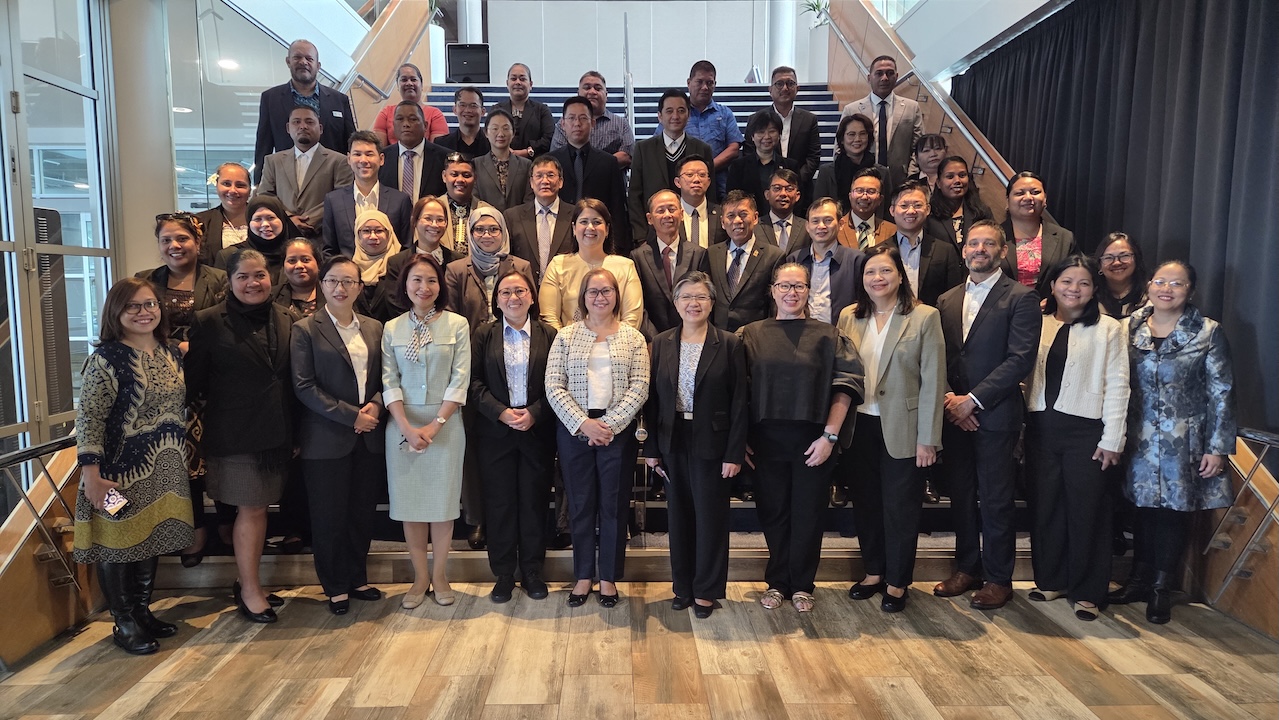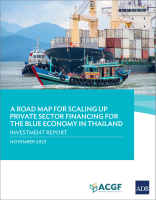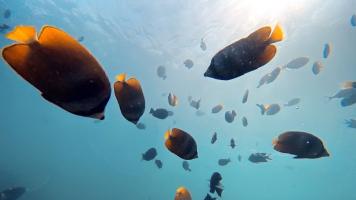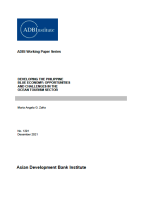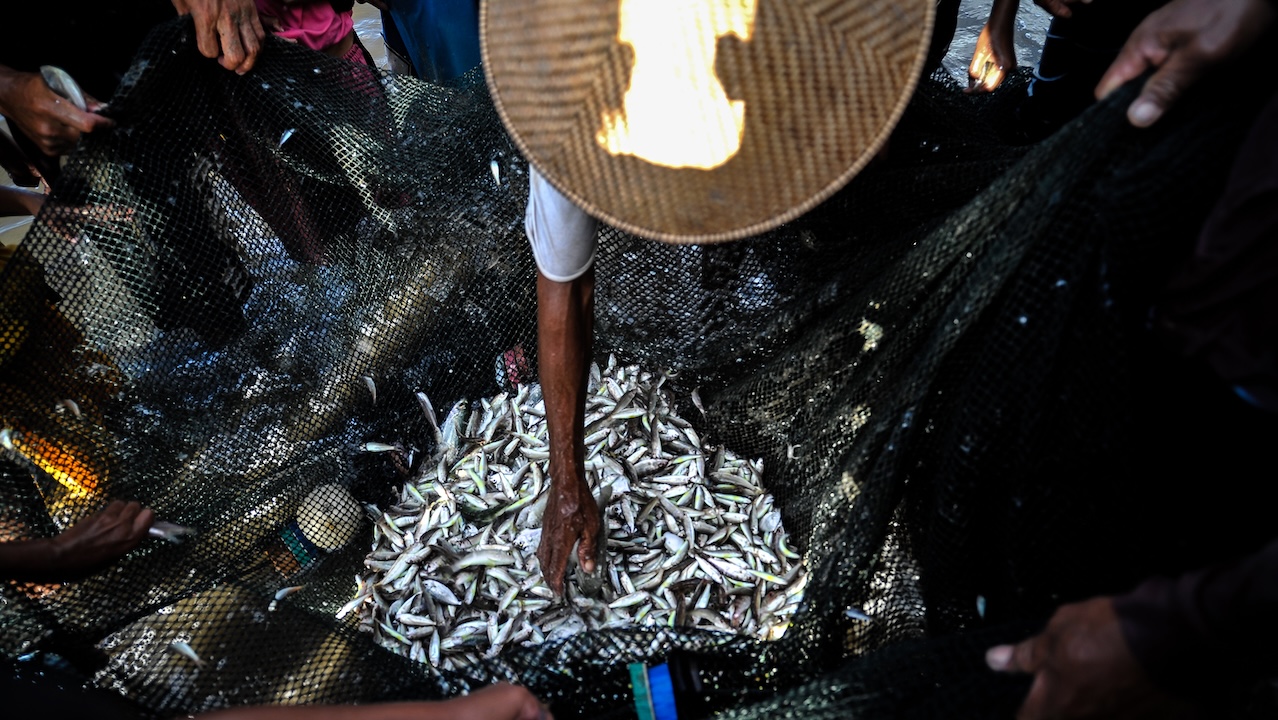
Protecting and restoring coastal and marine ecosystems has become more urgent for billions of people who depend on healthy oceans for their livelihoods, food security, health, and recreation. Photo credit: ADB.
With increasing stress on oceans, embracing this sustainable economic model is becoming more urgent.
A sustainable blue economy is important for Asia and the Pacific as billions of people depend on healthy oceans for their livelihoods, food security, health, and recreation. Countries, however, need to work together to address increasing threats to ocean health to protect and preserve marine ecosystems.
“We all know the importance of oceans and seas in spurring economic growth and providing livelihoods to populations in our region,” said ADB Climate Change and Sustainable Development Department Principal Regional Cooperation Specialist Yuebin Zhang at a recent workshop. “We also know that our oceans and seas are under increasing pressure. We need to take action to ensure that we protect and restore our coastal and marine ecosystems not just for our generation but also for future generations.”
ADB organized a workshop in New Zealand in August as part of its efforts in implementing the Healthy Oceans Action Plan, which was launched in 2019. The 4-day activity brought together blue economy experts and 40 middle- to senior-level government officials from Southeast Asia, the Pacific, and the People’s Republic of China to promote knowledge sharing and collaboration.
ADB’s Healthy Oceans Action Plan aims to scale up investments and technical assistance to protect and restore coastal and marine ecosystems, promote inclusive livelihoods, foster sustainable blue economies, build resilient coastal communities, and enhance food security across Asia and the Pacific. Since the launch of the plan, ADB has allocated close to $5 billion for ocean investments.
Cross-border initiatives
Regional cooperation is important in advancing the blue economy because of the transboundary nature of many ocean-related issues.
Zhang said ADB supports the blue economy through regional cooperation initiatives that enhance regional infrastructure and transport connectivity, foster global and regional trade and investment, and promote regional public goods.
“We are intensifying our efforts toward supporting regional public goods, undertaking initiatives to protect the environment, promote natural resource management, mitigate disaster risks, and foster regional health security,” he said.
These include supporting the Brunei–Indonesia–Malaysia–Philippines East ASEAN Growth Triangle (BIMP-EAGA) and the Indonesia–Malaysia–Thailand Growth Triangle (IMT-GT) through capacity building and strategic planning as these countries collaboratively align their initiatives with the Association of Southeast Asian Nations (ASEAN) Blue Economy Framework. ADB is also helping 14 member countries in the Pacific to generate more investments in ocean health and in climate-resilient and sustainable blue economy by supporting governance and planning, identification of issues and opportunities, regional capacity development, and knowledge sharing.
“ADB-supported initiatives in Southeast Asia and the Pacific have underscored the vital role of knowledge sharing, regional cooperation and integration, and inter-subregional collaboration in advancing the blue economy,” said ADB Southeast Asia Department Regional Cooperation Specialist Pamela Asis-Layugan. “These initiatives have generated a wealth of insights and practical approaches that inform the design and implementation of sustainable ocean-based economic strategies. Both regions—and their associated subregional cooperation frameworks—stand to benefit significantly from the lessons learned and experiences gained through the study, planning, and strategizing of blue economy initiatives.”
Mounting ocean stress
Over the years, oceans and seas have provided livelihood to some 3 billion people. Oceans also support 80% of global trade, represent assets valued at over $24 trillion, and generate goods and services worth $2.5 trillion annually.
However, human activities that often prioritize short-term economic gains over environmental sustainability are putting increasing pressure on oceans. The ongoing degradation of marine environments stems from overfishing, pollution, habitat destruction, and other harmful practices. At the same time, such phenomena as rising sea levels, ocean warming, acidification, and carbon accumulation in seabeds are intensifying the threats to ocean health.
The warning signs are everywhere. Half of all coral reefs, which provide habitat for 25% of the world’s marine life, have disappeared since the 1950s. In April, news reports say 84% of coral reefs worldwide have been hit by the worst bleaching event on record. A new report from the Food and Agriculture Organization (FAO) says 35.5% of fishery stocks are overfished. Plastic waste continues to be a threat as an estimated 9 million to 14 million metric tons of plastic flows into the ocean each year. Since the industrial revolution, ocean acidity has increased by 30%.
Nature-based and tech solutions
The workshop explored possible pathways to a sustainable blue economy, including nature-based solutions and technology-driven initiatives that may be replicated in countries or scaled up to the region.
An ecosystem approach to fisheries is among those gaining ground in advancing the blue economy. This strategy focuses on the health, diversity, and balance of the ecosystem with the yield of many species considered as well as ecosystem services.
An example is the Philippines’ Adopt a Village program, which promotes sustainable fisheries and aims to boost the population of blue swimming crabs in the highly overfished Visayan Sea. It addresses overfishing while improving community development in selected areas. The project was piloted in Iloilo Province in 2023 and then replicated in other parts of the country.
In Cambodia, ADB is supporting a project that deploys an ecosystem approach to restore degraded fish habitats and breeding grounds by working with community fisheries. The project also aims to make the fisheries sector more climate resilient through nature-based solutions like mangrove restoration.
At the workshop, ADB Senior Environment Specialist Melody Ovenden stressed the importance of deploying indigenous knowledge in the shift to the blue economy. Many indigenous traditional practices are based on a deep understanding of ecosystems.
“When we talk about our indigenous communities, the people who have close relationships to the sea, this is indigenous knowledge. This is information that we've had from the past, brought down many generations to future generations, that need to be taken into consideration when we talk about fisheries and aquaculture management,” she said.
Technology is also proving to be an effective tool for nurturing a blue economy. Advances in cultivating marine life have enabled the exponential growth of aquaculture. In the last 75 years, aquaculture output has grown so much that it is close to breaching 200 million tonnes, making it bigger than capture fisheries.
Artificial intelligence can process satellite data that can be used to identify illegal, unreported and unregulated fishing estimated at between 10 million and 26 million tonnes a year. Satellite data can also inform nations on how to protect biodiversity and better manage fisheries.
In Samoa, electric ferries were designed by a New Zealand company based on traditional Alia boats to provide safe, efficient interisland transport. The electric ferries offer an alternative to traditional fossil-fueled ferries to reduce noise, air, and water pollution.
Aquaculture value chains
Meanwhile, developing sustainable aquaculture value chains offer multiple benefits to both people and the environment.
In Indonesia, an ADB-supported project is adopting an integrated value chain approach to boost the productivity, quality, profitability, and environmental sustainability of smallholders’ shrimp farming in the provinces of Bali, Banten, Central Java, East Java, Lampung, Nangro Aceh Darusalam, and South Sulawesi. Interventions include developing incentive mechanisms toward sustainable and quality feeds, restoring idle shrimp-farming ponds, increasing farmers' capacity in managing diseases and water resources, investing in sustainable production models and providing basic facilities, increasing private sector linkage with smallholders, and improving farmers' credit access.
In Thailand, a new project also seeks to improve the sustainability and resilience of the shrimp supply chain. ADB mobilized blue finance for Thai Union Group Public Company Limited, which works with farmers to improve farming practices, boosting their farms’ resilience to diseases and climatic conditions, such as heat waves.
These initiatives demonstrate that through collaboration—between governments, communities, or the private sector—the region can pave the way for a resilient blue economy.
